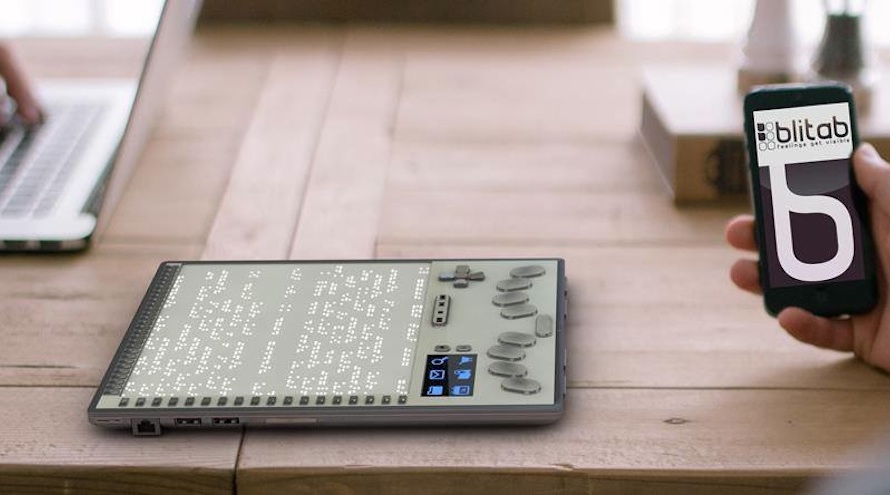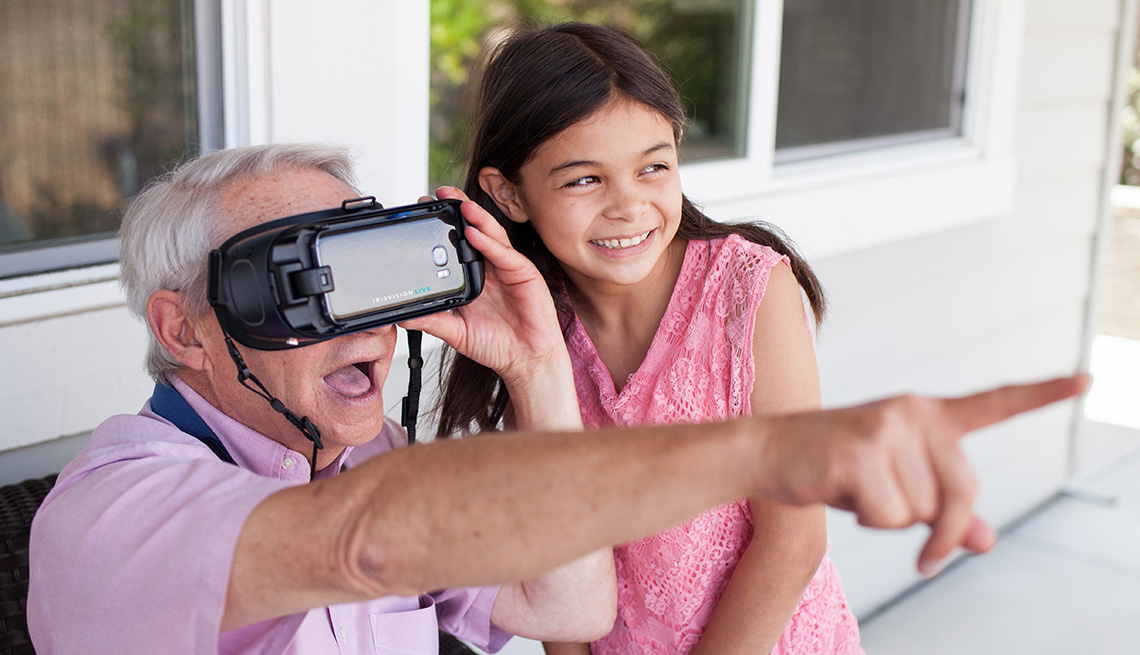Screen Readers for the Blind: Accessing Data Without Barriers
Wiki Article
Discover Innovative Devices Developed for the Visually Impaired
The advancement of cutting-edge tools for the aesthetically damaged stands for a considerable advancement in access and self-reliance. Technologies such as wise glasses with AI abilities and mobile applications developed to give acoustic descriptions are reshaping everyday experiences for individuals.Smart Glasses for Navigating

Smart glasses made for navigating are revolutionizing the way aesthetically impaired individuals communicate with their setting. These sophisticated devices utilize a mix of electronic camera modern technology, expert system, and auditory comments to offer real-time information about surroundings. By using obstacle discovery systems, clever glasses can alert customers to possible threats, enabling more secure flexibility in both acquainted and unfamiliar settings.
The integration of GPS modern technology additionally boosts navigating abilities, enabling individuals to receive auditory directions as they move. This hands-free approach not just fosters freedom yet additionally encourages aesthetically impaired people to browse urban landscapes with boosted confidence. Furthermore, numerous wise glasses are outfitted with functions that recognize landmarks and road signs, providing contextual information that boosts the individual experience.
Furthermore, the growth of these gadgets is consistently progressing, with firms functioning to boost the accuracy of item recognition and expand the variety of navigational functions. As wise glasses become more available and inexpensive, they hold the prospective to substantially transform day-to-day life for visually damaged customers. Inevitably, these innovative tools represent a critical step towards inclusivity, offering improved mobility and a better sense of freedom for individuals browsing the globe around them.

Mobile Application for Daily Living
How can mobile applications enhance the every day lives of aesthetically impaired individuals? Mobile applications are reinventing the way visually damaged users browse their settings, take care of daily jobs, and gain access to information. These applications offer important support through numerous performances, fostering independence and enhancing quality of life.Numerous cutting-edge mobile apps are developed especially for day-to-day living. Apps like Be My Eyes attach visually damaged individuals with sighted volunteers via video clip telephone calls, enabling them to obtain real-time help with jobs such as reviewing labels or navigating strange rooms. Similarly, Seeing AI, developed by Microsoft, uses synthetic knowledge to explain surroundings, read text, and identify items, properly changing a smartphone into an effective device for daily aid.
Additionally, navigation apps customized for the visually impaired, such as Aira and BlindSquare, supply audio-based directions and environmental info, allowing individuals to traverse their environments safely and confidently. Past navigating and prompt assistance, mobile apps also support company and task monitoring, with attributes that aid individuals set reminders, produce order of business, and track appointments. In summary, mobile applications function as indispensable sources, empowering aesthetically damaged individuals to lead more independent and meeting lives.
Wearable Technologies for Assistance
Empowerment via innovation is increasingly apparent in the world of wearable tools developed to aid visually impaired people. These cutting-edge tools incorporate perfectly into day-to-day live, enhancing navigation and offering essential responses to individuals. Smart glasses geared up with cameras can recognize faces and check out message aloud, permitting users to connect even more confidently in professional and social settings.One more noteworthy development is making use of haptic comments systems in wearable tools. These systems utilize resonances or various other responsive signals to communicate details concerning the user's atmosphere, such as barriers or changes in surface, boosting wheelchair and security. Wearable innovations also consist of wristbands that link to smart devices, alerting users to alerts through subtle resonances, thus boosting connectivity without reliance on visual cues.
As these innovations remain to evolve, they are not just improving independence for visually damaged people however likewise promoting a better feeling of inclusion in society. By linking the void in between obstacles encountered in everyday living and the potential for autonomy, wearable technologies work as crucial tools in the mission for equality and empowerment for those with aesthetic impairments.
Sound Summary Devices
Audio description devices play an essential duty in enhancing availability for aesthetically impaired individuals, supplying them with the capability to involve with visual media. Screen readers for the blind. These devices offer narrated descriptions of essential aesthetic elements in movies, tv programs, and live performances, ensuring that users can totally comprehend the context and emotions conveyed with visualsSound description can be integrated right learn the facts here now into numerous systems, including streaming solutions, movie theater testings, and live cinema. Numerous preferred streaming solutions now consist of audio summary as an availability function, allowing audiences to select it conveniently. Along with mainstream media, specialized apps likewise exist, providing audio descriptions for art exhibitions, galleries, and other cultural events.
The efficiency of audio summary pivots on the skill of the narrators, who have to convey aesthetic details succinctly without detracting from the original sound. Technologies in this field are likewise leading the way for even more tailored experiences, where customers can change the degree of information and pacing according to their choices.
Braille Innovations and Tools
Braille technologies and tools have substantially changed the means aesthetically damaged individuals interact with text and information. Modern advancements have actually link brought about the growth of flexible devices that boost literacy and freedom among users. Especially, Braille display technologies have developed, permitting dynamic reading experiences. These gadgets transform electronic text right into Braille, allowing individuals to access a huge range of details on tablets, computer systems, and mobile phones.
Additionally, portable Braille notetakers integrate traditional Braille input with modern capabilities, helping with note-taking, organizing, and document editing on the go. Speech-to-text devices for low vision. These small tools typically feature text-to-speech abilities, connecting the void between Braille and auditory info
On top of that, innovative Braille printers have actually emerged, permitting users to create Braille tags, documents, and instructional materials effectively. This access cultivates higher participation in specialist and educational environments, inevitably promoting inclusivity.
In addition, research into clever Braille technologies remains to broaden. navigate here Devices that integrate synthetic intelligence are being explored to offer real-time navigating assistance and contextual info, boosting the customer experience in diverse setups. On the whole, these technologies mirror a dedication to encouraging visually damaged individuals with innovation, guaranteeing they can quickly accessibility and engage with the globe around them.

Verdict
The innovation of ingenious devices for the visually impaired substantially enhances self-reliance and quality of life. These innovations not only foster higher addition but likewise promote freedom in everyday activities, inevitably adding to a much more equitable and easily accessible society for visually damaged people.As smart glasses end up being a lot more budget friendly and obtainable, they hold the prospective to substantially change day-to-day life for visually impaired users. Mobile apps are changing the means aesthetically damaged customers navigate their environments, manage day-to-day jobs, and accessibility information. Applications like Be My Eyes connect aesthetically impaired users with sighted volunteers via video phone calls, enabling them to get real-time help with tasks such as reading labels or navigating unknown rooms.Additionally, navigation apps tailored for the aesthetically impaired, such as Aira and BlindSquare, offer audio-based instructions and ecological details, allowing users to traverse their surroundings safely and with confidence.The innovation of innovative tools for the aesthetically damaged considerably boosts self-reliance and quality of life.
Report this wiki page